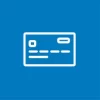As a numbers geek, I love to browse through public statistics. The official payment statistics from the Swiss National Bank (SNB) are always on my list, and the statistics for the whole of 2023 are now available.
I enriched the SNB data with information published by Twint. The numbers reveal some interesting facts, and confirm that humans are creatures of habit.
Debit cards are the most widely used, followed by credit cards and Twint
Paying for purchases using debit cards is still very popular in Switzerland. In 2023, consumers used Swiss debit cards to pay for a total of 1522 million purchases.
Swiss credit cards take second place, by a wide margin. Consumers used them to make 467 million local transactions. Mobile payment service Twint is the third most popular cashless payment method, with 425 million purchases being paid for with Twint in 2023. Prepaid cards take fourth place, with 45 million payments being made with prepaid cards in 2023.
The dominance of debit cards is also clear when you look at figures as percentages. With a share of 62 percent, based on the number of transactions, debit cards are the most widely used cashless payment method. They are followed by credit cards (19 percent) and Twint (17 percent).
106 billion francs of purchases
Many Swiss consumers appreciate the fact that payments made with debit cards are charged directly to their bank accounts. So the dominance of debit cards for in-store payments is not surprising. Additionally, debit cards were the only cashless payment method accepted by many Swiss supermarkets far into the 2000s.
In total, local consumers spent a total of 106 billion francs in Swiss brick-and-mortar and online stores using cashless payment methods. That is an impressive sum. It translates into around 14,400 francs per adult in Switzerland, which in turn translates into nearly 1200 francs per month. Of that total amount, 66 billion francs was spend using debit cards, 32 billion was spent using credit cards, and – according to estimates – around 8 billion francs was spent using Twint.
Debit cards are the clear leader for brick-and-mortar spending
Debit card dominate spending at brick-and-mortar businesses like cafés, restaurants, hotels, service providers, and vending machines. In other words, payments made in person. However, they do not dominate online spending. In 2023, consumers in Switzerland paid for 1482 million purchases from Swiss brick-and-mortar businesses using Swiss debit cards. Credit cards were used for nearly 330 million purchases of this kind, Twint was used for around 255 million purchases, while prepaid cards and universally-accepted gift cards were used for 30 million purchases.
Purchases paid for with Swiss debit cards in 2023 totaled 63 billion francs, compared to nearly 20 billion francs with Swiss credit cards, and less than one billion francs with prepaid cards. In total, 84 billion francs of purchases from brick-and-mortar merchants were paid for with payment cards. Figures for Twint are not available.
Debit cards are the preferred cashless payment method of Swiss consumers when it comes to brick-and-mortar payments. They are used for 71 percent of all cashless transactions in this category, while credit cards are used for 16 percent and Twint is used for 12 percent.
Swiss used credit cards and Twint for online spending
The payment landscape is very different when it comes to so-called “card not present” purchases, with credit cards and Twint leading in this category. Although all purchases which are paid for remotely are classified as “card not present” transactions, today this category is overwhelmingly made up of purchases made in online shops and mobile apps.
Swiss credit cards were used to make a total of 137 million purchases from Swiss online merchants, with the value of these purchases totaling 12 billion francs. Debit cards follow by a wide margin, with 40 million transactions worth a total of 2.5 million francs. Prepaid cards were used for 15 million online purchases which together were worth 800 million francs. Twint does not publish the exact number of transactions, but did confirm that this figure is in the region of 170 million transactions. That would make Twint the most used payment method for purchases from Swiss online merchants.
At the start of Swiss online shopping age around 25 years ago, credit cards were the payment method that was accepted by nearly every online store. The popular Maestro debit card could not be used to pay online in Switzerland. Consumers got used to that arrangement. The new generation of debit cards that can be used for most online payments has only been around for a couple of years. Twint, for its part, has achieved what debit cards were not able to achieve. Twint has become a leading online payment method within a very short period of time.
Credit cards are more popular for purchases from foreign merchants
Credit cards are also the preferred cashless payment method of Swiss consumers for purchases outside of Switzerland. In 2023, a total of 268 million purchases from foreign merchants were paid for using Swiss credit cards. These purchases had a combined value of 24 billion francs. Debit cards lose the popularity contest, as they were used for a lower 179 million foreign transactions with a combined value of around 10.5 billion francs. Prepaid cards were used for 43 million foreign transactions worth 2.3 billion francs combined. In total, Swiss consumers spent around 37 billion francs at foreign merchants using cashless payment methods.
Nearly 55 percent of foreign cashless transactions were made with credit cards, compared to 37 percent with debit cards, and nearly 9 percent with prepaid cards. The dominance of credit cards in this category is largely due to their use for purchases from foreign online merchants. Around 64 percent of these transactions were paid for using credit cards in 2023. For brick-and-mortar purchases from foreign merchants, debit cards are the most popular, with more than half of all payments from brick-and-mortar businesses in other countries being made using debit cards.
85 percent of card payments are contactless
The Swiss National Bank’s statistics also include information about how many cashless payments (excluding Twint) are made using contact-free technologies. For both Swiss credit cards and Swiss debit cards, around 85 percent of payments are made without inserting the card.
Tourists visiting Switzerland are less likely to use contactless payments. in 2023, 66 percent of payments in Switzerland made with foreign debit cards were contactless, as were 60 percent of payments made with foreign credit cards.
129 million cash withdrawals in Switzerland
Swiss debit cards were used to make 129 million cash withdrawals from Swiss ATMs. The total amount of money withdrawn was more than 53 billion francs. Cash withdrawals with debit cards are also popular with Swiss consumers when traveling outside of Switzerland. Swiss debit cards were used to make 25 million cash withdrawals from foreign ATMs in 2023, with a total of around 3.5 billion francs withdrawn.
What completely baffles me is the huge number of cash withdrawals from ATMs made using credit cards. Swiss credit cards were used for 7,594,200 cash withdrawals in 2023. The reason I find that surprising is that it is generally much more expensive to withdraw money with credit cards than with debit cards.
Prepaid credit cards and electronic money
The Swiss National Bank lumps prepaid cards and electronic money into one category for its statistics. In addition to prepaid cards, that category also includes gift cards that are universally accepted – meaning they can be redeemed towards payments at many different merchants. For the sake of simplicity, I referred to all cards in this category as prepaid cards.
More on this topic:
Compare Swiss credit cards now

 Deal of the Day
Deal of the Day 




